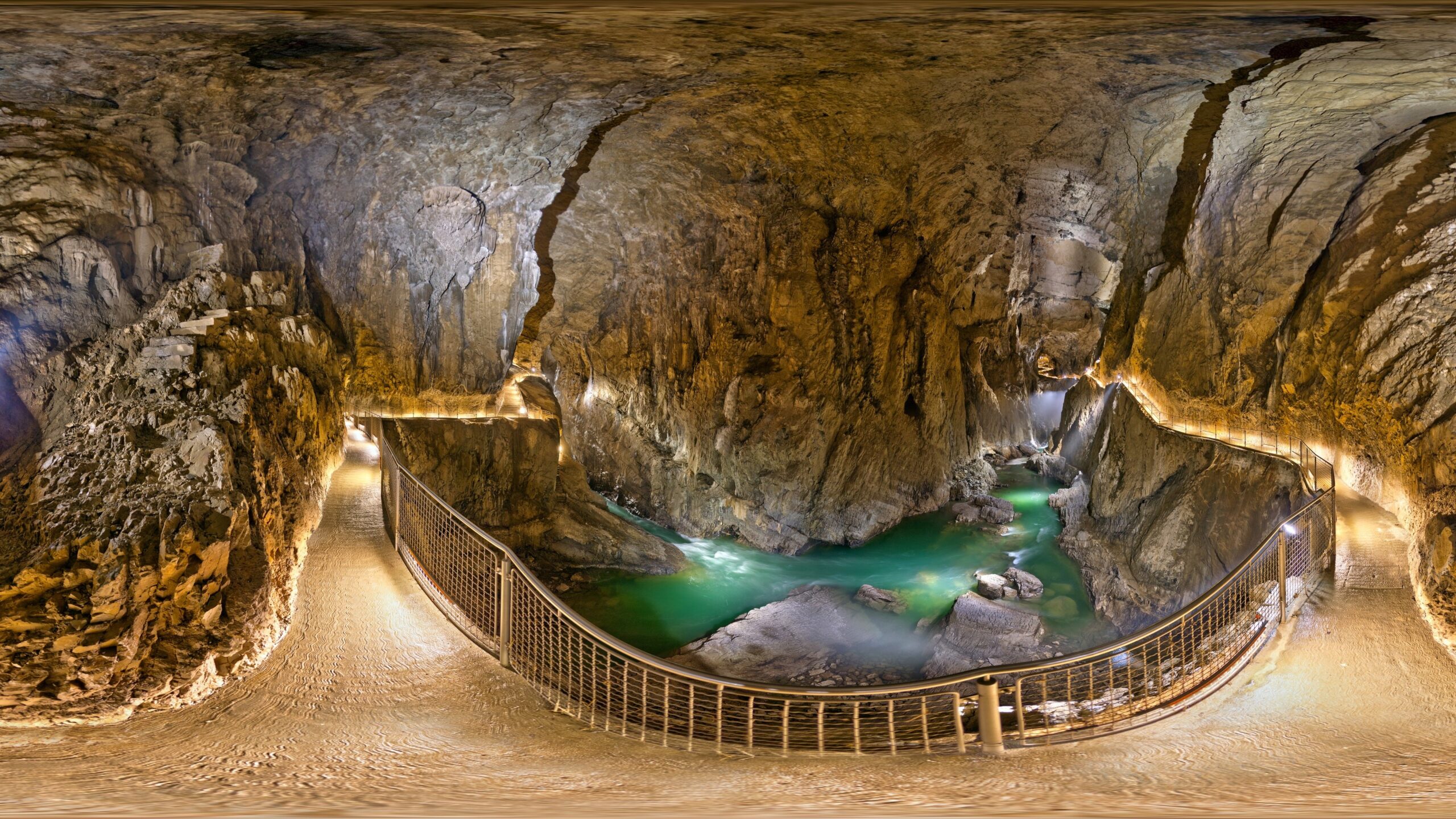Exploring the Heritage of Slovenia: UNESCO Sites from Caves to Capitals
Slovenia, a small yet remarkably diverse country in the heart of Europe, boasts an impressive array of UNESCO World Heritage Sites that span natural wonders, cultural landmarks, and intangible cultural heritage.

Did you know that Slovenia, a country celebrated for its stunning diversity, is home to an array of UNESCO World Heritage Sites that span breathtaking natural wonders, captivating cultural landmarks, and vibrant intangible heritage? These remarkable sites not only showcase Slovenia’s rich tapestry of history and natural beauty but also reflect its deep commitment to cherishing and sharing its heritage with the world.
1 Natural Heritage: The Karstic Phenomenon
Škocjan Caves: A Subterranean Wonderland
The Škocjan Caves, a network of limestone caves in the Slovenian Karst region, are among the most significant underground phenomena in the world and a UNESCO World Heritage site since 1986. With the largest underground canyon in Europe, the caves are a testament to the Earth’s natural history, featuring vast chambers, towering stalactites, and thundering waterfalls. The Škocjan Caves are not just a natural wonder but also a site of cultural importance, having been a crossroads for various civilizations, which is evident from the archaeological finds within the caves.
Ancient Beech Forests: Timeless Natural Sanctuaries
The Primeval Beech Forests of the Carpathians and Other Regions of Europe, which include Slovenia’s Krokar and Snežnik-Ždrocle forests, represent an outstanding example of relatively undisturbed, complex temperate forests. Slovenia’s inclusion in this transnational UNESCO World Heritage Site underscores the universal value of these forests in understanding the history and evolution of the last Ice Age in Europe. These ancient woodlands are not only a refuge for diverse species but also a living reminder of the sylvan world that once covered much of the continent.
2 Cultural Heritage: From Ancient Mines to Urban Design
Idrija: A Town Shaped by Mercury
The town of Idrija, with its mercury mine, stands as a testament to the ingenuity and resilience of its people. The mercury mining in Idrija, which dates back to the 16th century, was pivotal in the development of mining sciences and technologies. The town’s well-preserved cultural landscape, including the miner’s houses, the smelting plant, and the unique water management system, reflects the social and technological advancements spurred by mercury mining. Idrija’s lace-making tradition, a delicate craft nurtured by the mining community, adds another layer to the town’s rich cultural tapestry.
Ljubljana Marshes: A Prehistoric Time Capsule
The Ljubljana Marshes reveal a fascinating glimpse into prehistoric pile dwellings, showcasing the early human adaptation to wetland environments. The discovery of the world’s oldest wooden wheel with an axle in this area is a landmark testament to human innovation. These archaeological treasures, protected as part of the Prehistoric Pile Dwellings around the Alps UNESCO site, provide invaluable insights into the daily lives, social structures, and technological advancements of the prehistoric communities in the region.
Plečnik’s Ljubljana: A Visionary’s Legacy
The architectural works of Jože Plečnik in Ljubljana are a tribute to the visionary architect’s ambition to transform the city into a harmonious and holistic urban space. Plečnik’s innovative designs, which blend classical and modernist styles, are evident in the iconic Triple Bridge, the Central Market, and the National and University Library. His work not only redefined Ljubljana’s cityscape but also contributed to the broader narrative of 20th-century urban European design.
3 Intangible Cultural Heritage: Living Traditions
Slovenia’s intangible cultural heritage, recognized by UNESCO, celebrates the country’s diverse traditions, from beekeeping practices that underline the importance of bees to the ecosystem and human survival to the Lipizzan horse breeding tradition that exemplifies the deep connection between humans and animals. The Škofja Loka Passion Play and the door-to-door rounds of Kurenti highlight Slovenia’s rich folklore and seasonal customs, which continue to play a vital role in community bonding and cultural identity.
Bobbin Lacemaking: Threads of Tradition
Bobbin lacemaking in Slovenia is a craft that intertwines beauty, skill, and cultural identity. This delicate art form, particularly renowned in Idrija, is a testament to the meticulous craftsmanship and creativity of Slovenian lacemakers. The tradition, preserved and passed down through generations, represents a unique aspect of Slovenia’s cultural heritage, showcasing the country’s dedication to maintaining and celebrating its artisanal history.
Dry-Stone Walling: A Testament to Harmony with Nature
The technique of dry-stone walling, practiced in Slovenia’s Karst region and Istria, is a remarkable example of sustainable construction that harmonizes with the natural landscape. This method, which involves stacking stones without any binding material, is emblematic of a deep-rooted respect for nature and an understanding of local materials and environmental conditions.


